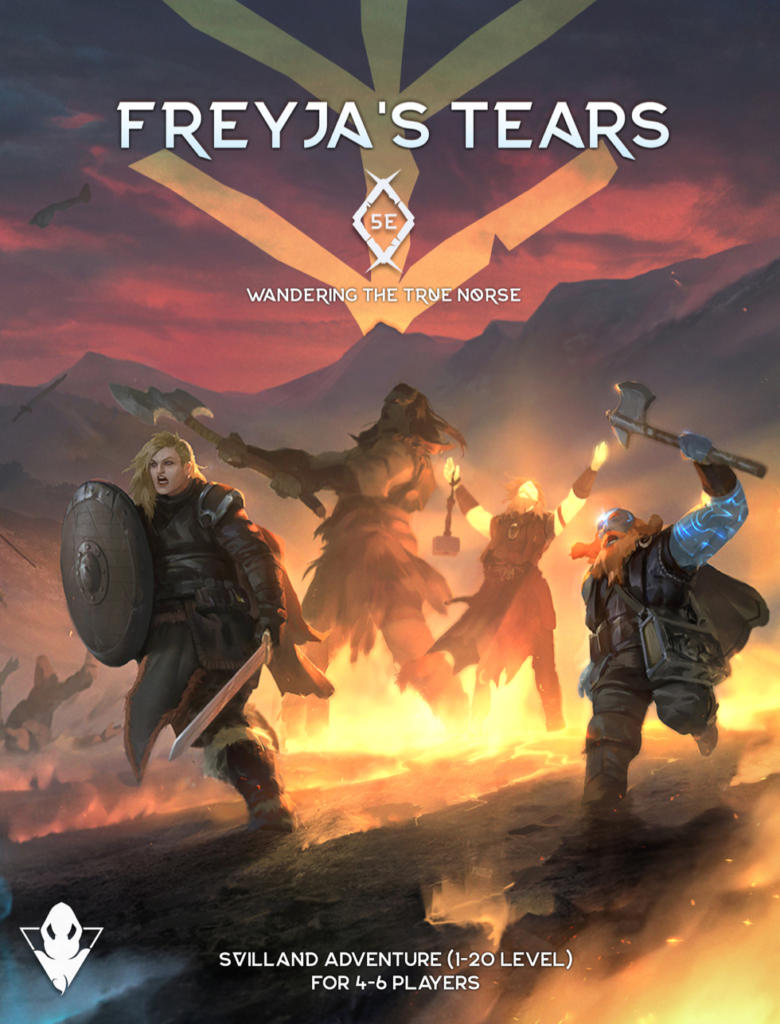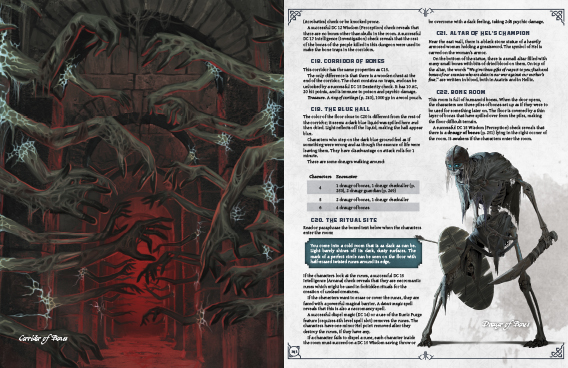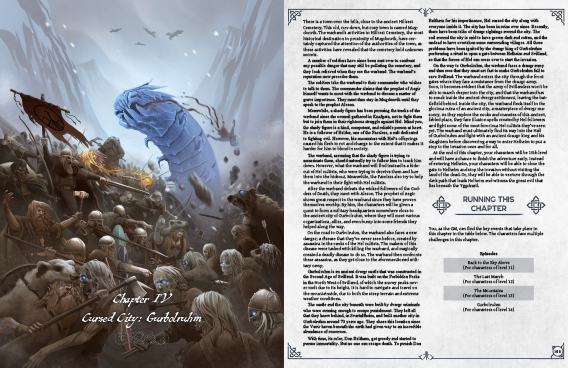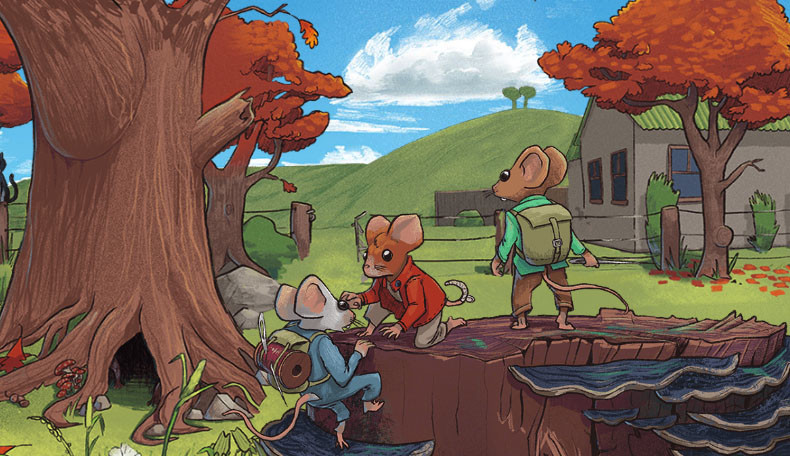Review of the Norse DnD 5e Adventure “Freya’s Tears”

This post contains affiliate links, which are marked with a “*” in the name.
Although I’m distancing myself from Dungeons and Dragons 5e due to overplayed, I received the books around the Nordic setting Svilland and the campaign Freya’s Tears after a long time of waiting. It is the third DnD campaign I have read as a whole, besides Storm King’s Thunder and Descent to Avernus. I liked the setting of Svilland quite a bit when I first read it and now that the epic level 1 – 20 campaign has come out, I wanted to see if the campaign was any good to play it with other systems if necessary.
So today I want to talk about Freya’s Tears and explain a bit more what it’s about, what the campaign wants to tell and which good and less good aspects stand out.
- Publisher: Dream Realm Storytellers
- Release Year: 2021
- Language: English
- Pages: 284
- Format: PDF
- Price: 28,99 $ on DriveThruRPG*
FIGHT FOR SVILLAND!
(Text from the back cover of the book)
Dark Clouds are closing in, the soil has turned to rot, and the dead are rising as draugrs. Hel followers are building up their strength to invade Svilland on the sly. The land of the living is on the edge of demise. However, a warband of brave warriors discovers the threat and takes a stand against the followers of Hel in the name of Freya. Svillanders, it is up to you to save your land from the dead!
[…] The warband will start at a small village and end their adventure in the cold pits of Helheim; the land of the deadliest horrors. On the way, they will come across desecrated temples and cleanse them, play a part in political conflicts, visit many cities and towns of Svilland and travel through its dangerous wilderness. As such, Freya’s Tears is designed for players to experience the majesty of Svilland to the full.
The Book
The 285 pages long book is structured in a usual way and focuses mainly on the 5 chapters of the campaign. Before that, the background of the campaign is explained, the appearing factions are briefly described and a small section about the authors’ ideas of adventures and stories in Svilland is presented.
Part of the introduction are also the “Hel Points”, which represent the influence of Hel on the warband and will be described in the following.
The appendix includes the spells and monsters of the story, as well as the items that may appear in the adventure.
Throughout there are many read-alouds, which of course carry the mood even further to the players, and at the beginning of many sections there is a sentence on which track from the campaign soundtrack you could play.
Hel Points
Hel’s influence is represented by the so-called Hel Points. Each character can accumulate these points during the story. Throughout the adventure there are situations that cause or heal Hel Points. However, it is also suggested for heroic actions to lower Hel’s influence. Otherwise, I read more and more about Hel points being healed or awarded, especially in later chapters. When Hel points are awarded, it is often due to failed saves or specific situations and not arbitrarily.
There are minor Hel points and major ones. While minor points are each associated with a vision that occurs when you receive a point, major points are tied to rule mechanic effects. Starting with advantages like darkvision up to the final death of the characters. With these points you want to build up the threat of Hel and her minions of course and remind especially of sanity or corruption from cthulhuoid games or something like the Shadow of the Demon Lord.
It should be mentioned that 5 minor points are added to one major point. After 25 minor or 5 major points, death is reached.
Short Overview of the Chapters of Freya’s Tears
As described in the book’s back cover, the warband establishes itself in Chapter 1 and also encounters the threat of Hel’s followers. This was to be expected and doesn’t hold many spoilers yet, but the next lines may be a bit more cryptic so as not to give anything away about the story.
Chapter 1 – The Beginning of the End
Chapter 1 of Freya’s Tears* is fairly straightforward, but solid and well rounded written. This chapter is super self-contained and you could end right at the end of the chapter and move on to the next campaign. Already in the first chapter you notice the oppressive atmosphere and also that perhaps victories are won, but also demand their victims.
Chapter 2 – In Search of Solidarity
In chapter 2, the warband follows a trail and comes to several villages of Svilland. This gives the campaign a lot of charm from the setting and brings this even closer. Which place is visited in which order doesn’t matter here and it allows a bit more freedom than the first chapter. I would even go so far as to say that you could almost play the campaign as a plot point campaign at this point until the middle of chapter 3.
Chapter 2 has a brief overview for each village, rumors, an entry event, and also hints about Hel’s influence. What’s especially nice is that the eerie atmosphere is maintained and the promised beginnings of political conflict are picked up. I would title an adventure already in the direction of an infiltration, as it read as very unwise to simply storm through the front door.
Chapter 3 – The New Path
The third chapter begins with a bit of clarification on the story experienced in the second chapter. This is also the point where a possible plot point campaign would have to pause briefly to allow this “the story so far” moment to be dealt with. The third chapter is otherwise exciting, as it is here at the latest that the warband is confronted with a powerful faction and various approaches are described in the book on how to deal with this faction.
The authors of Freya’s Tears also tried to offer possibilities outside of combat in chapters 2 and 3. All in all, the campaign reads like a 5e campaign, of course, and thus more than enough combat, but many were more skirmishes or named battles. I don’t know if it’s coincidence or value was placed on combat being relevant to either the tone of the campaign or the story itself. In the classic sense dungeons here are 3 stuck in my head, one of which has 3 levels, several “boss fights” and takes a not insignificant part in the third chapter. Encounters overall were always designed for different group sizes and also individual enemies get additional special abilities depending on the size of the warband and some also have special events in different rounds similar to the Action Oriented Monster Design by Matt Colville.
Chapter 4 – Cursed City: Gurbolruhm
In the penultimate chapter of Freya’s Tears, the characters are not only past level 10, but also follow the campaign a bit more straightforward again. This is not a negative thing, and the first two sections of the chapter in particular build up a good amount of tension, with the group itself being chased by a stranger before heading to the city of Gurbolruhm. This chapter also features a mass battle, which also adds to the flair of a battle due to the various events in each round, where the warband does their part. It’s not much that the adventure contributes to this, but it reads as enough to set the scene well for this situation. As the title of the chapter says, it ends in the city, where there are a lot of things to discover and encounters to have.
At the end of the chapter, there is an option for people at the table to decide that they want to end the campaign at level 14. There is an earlier ending or the option to plunge into the darkness.
Chapter 5 – Into the Darkness
The last chapter is more or less the beach episode of the campaign. The journey leads to Helheim and there some characters are met, the last threads and questions are revealed. There are some nice ideas and Helheim itself has some quirks, even outside of the Hel points.
This chapter is by a good margin the shortest chapter and spans the most levels, so it tends to give the impression that somehow they wanted an epic conclusion quickly. This is something the group should sort out for themselves, as a lot of work can fall on the GM here to still fill this chapter with life and do justice to the higher levels in DnD. After reading the chapter, however, I was glad that it is optional, so to speak, because the fourth chapter has reached the climax with its arc of tension and the end in my eyes, which is why for me the fifth chapter was even more opposed to this mood.
Appendix
Not much can be said about the appendix, except maybe that there are illustrations primarily for the items. So if you’re into your cool illustrations of monsters, you’ll be disappointed in the appendix. It looks more like an appendix for statblocks spread across the pages.
Conclusion
The Northern Light
So what are the good points of Freya’s Tears*?
I think the subject matter and tone is incredibly well realized. The story feels ominous, dark and tragic. Not everything is a victory or a hard fought one. Friends fall and it is definitely more a fight for survival, which you hopefully win in the end, save the region, but just had to pay the price. The gods want to see sacrifices and only accept honorable warriors into Valhalla.
Very nice is that some factions appear within the story, which are mentioned in the setting. So the campaign very nicely connects the setting with the story and makes the world seem alive. Setting the group up as a warband is of course due to the setting on one hand, but also allows the story to have NPCs join this troop and camaraderie is formed.
Unlike many other adventures, the players or their characters are not exploited as “world saviors”. “Baldur’s Gate is going to be dragged into hell? Well, you just fought street thieves, but work it out. We don’t want to go to hell” such wonderful motivations and logics are less found here. The group comes under the influence of Hel and at first has only a simple task, while a council of different personalities takes care of the distribution of tasks and information. The warband will afterwards encounter the influence again in other places and hopefully feel more like they are part of this community that is actively trying to resist Hel and her servants.
I liked that there are fewer large dungeons and also alternatives like infiltrations. At the same time, the events and suggested Encounter sizes depending on the game group are also a very nice addition, and many monsters offer new ideas for exciting abilities.
The Deadly Cold of Helheim
What wasn’t so good about it?
Either I didn’t quite understand the Hel points or they are just very openly put into the GM’s hand. I lacked a bit of reference as to when they are awarded or to what extent. Towards the end of the campaign I read more frequent situations where these points are removed, but otherwise there are not that many triggers for them in the story. I think it could have been implemented a bit more boldly here. Otherwise, the idea with Hel points is quite good, but mainly because of that, I think it makes sense to read the individual chapters ahead of time to know if anything is done there with these points and thus align the characters’ accounts accordingly.
My next point is in the same vein: The campaign could have happily dared to do more. The tone and mood are nailed well, but it also offers so much great potential to add more intrigue, more conspiracy, and more darkness. In essence: more chapters 3 and 4. This is a bit of a nitpick, as Freya’s Tears already does a good job for a 5e campaign in that regard, but maybe that was the hold back.
My last point is chapter 5, simply no. I’m totally serious about it being the Beach episode. It reads like fanservice. “How do I get another quick 5 levels under my belt?”. My suggestion: End with chapter 4 or you as the GM build up chapter 5 nicely. The last chapter makes sense in itself, but reads like you stopped in the middle of the writing process and just somehow finished it. The final battle looks exciting, there are also cool ideas in the chapter, but it doesn’t feel worthy of a character’s last 5 levels.











